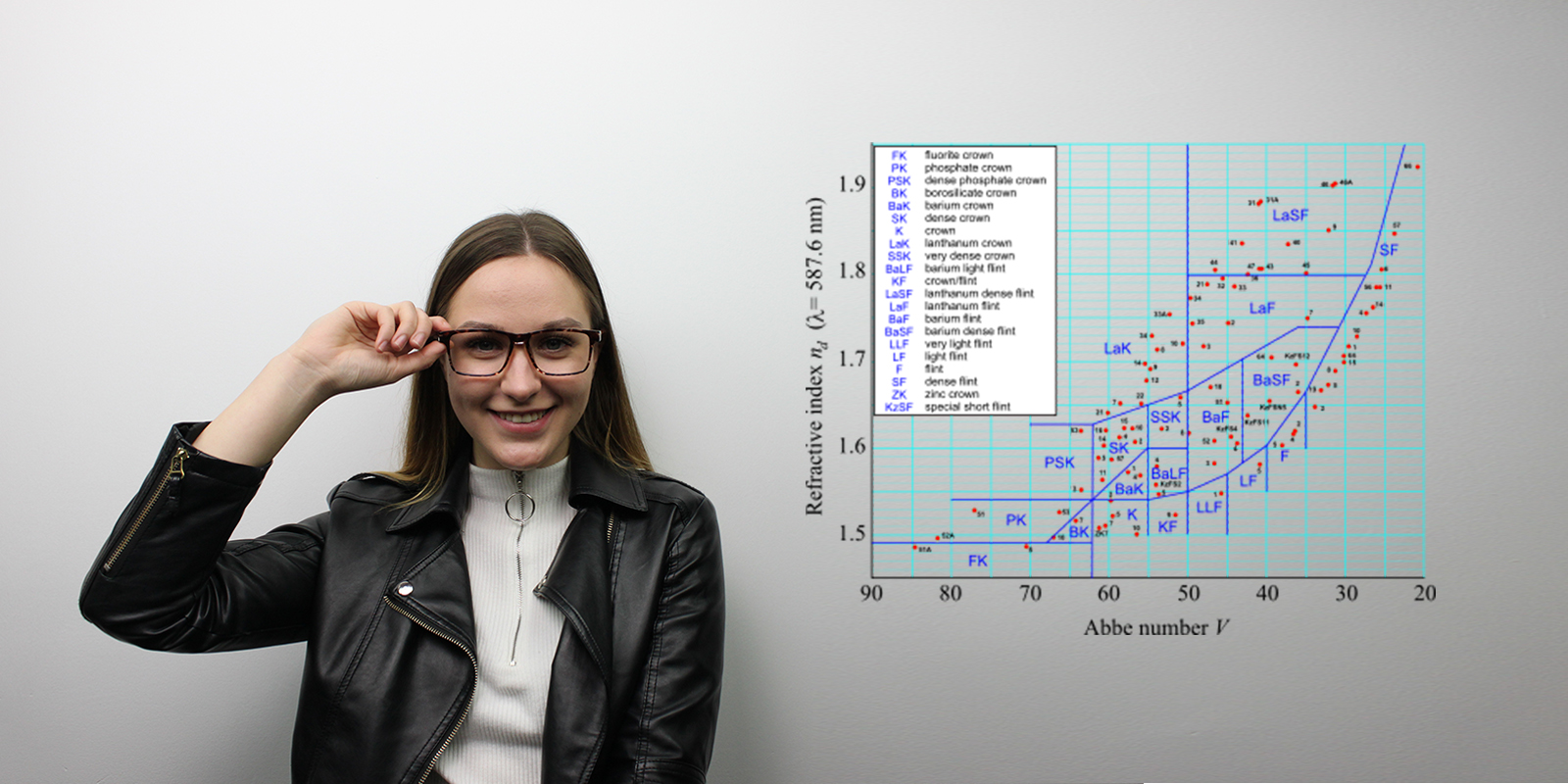
The Abbe number (or Abbe value) of a lens material is an objective measure of how widely the lens disperses different wavelengths of light as light passes through it. Lens materials with a low Abbe value have high dispersion, which can cause noticeable chromatic aberration — an optical error visible as colored halos around objects, especially lights.
When present, chromatic aberration is most noticeable when looking through the periphery of eyeglass lenses. It is least noticeable when looking directly through the central optical zone of the lenses.
Abbe values of eyeglass lens materials range from a high of 59 (crown glass) to a low of 30 (polycarbonate). The lower the Abbe number, the more likely the lens material is to cause chromatic aberration.
Abbe number is named after the German physicist Ernst Abbe (1840-1905), who defined this useful measure of optical quality.
